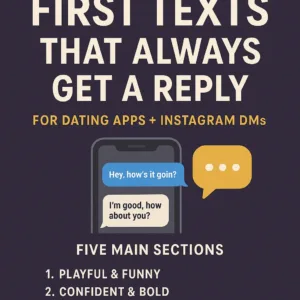Ever had someone thank you and felt like ‘you’re welcome’ was just… a bit too bland?
You’re not alone. Whether you’ve cracked a joke that made someone’s day or helped a mate carry their suitcase up three flights of stairs, saying “you’re welcome” is polite—but it can also feel a bit robotic. I’ve often found myself repeating it automatically, especially in emails or daily chats, and wondered if there’s a better way to inject personality into the response.
After years of writing, socialising across different cultures, and even running a blog on communication hacks, I’ve collected (and tested) a list of hilarious, quirky, and still appropriate ways to say “you’re welcome”—without sounding like a chatbot. And yes, some of these have gotten real laughs in real life.
This article will walk you through funny ways to say “you’re welcome,” how to use them appropriately, and why switching things up can be more than just entertaining—it can be good for connection and engagement, both online and off.
Why Change the Way You Say “You’re Welcome”?
Before we jump into the funny list, let’s quickly understand why it’s even worth exploring alternatives:
- Builds Rapport: Humour and lighthearted responses make you more memorable.
- Adds Personality: Especially in work emails, DMs, or casual texts, tone is key.
- Breaks the Ice: A funny reply can loosen up formal conversations.
- Keeps It Human: Especially with AI creeping into conversations, human quirks matter.
“Humour fosters trust,” says Dr. Jennifer Aaker, Professor at Stanford Graduate School of Business. “It creates a connection that makes people more receptive.”
Funny and Casual Alternatives to “You’re Welcome”
1. “Anytime, unless it’s before coffee.”
For the coffee lovers out there—this one’s a cheeky way to say “sure, no problem” while reminding them you’re human before 9am.
2. “I live to serve.”
Dramatic? Yes. Over-the-top? Also yes. But it always gets a grin.
3. “Don’t mention it—but since you did, I accept compliments in chocolate.”
Perfect for light-hearted emails or friendly banter.
4. “It was either that or cleaning the house.”
Great if you helped someone while procrastinating your chores.
5. “I accept payment in high-fives.”
Works in casual Slack chats or friendly text messages.
6. “Consider it my good deed for the decade.”
Self-deprecating humour for the win.
7. “Oh stop, you’ll make me blush!”
Responds with gratitude and personality.
8. “You owe me one—preferably coffee.”
When you want to be funny and subtly nudge someone into a return favour.
Context Matters: Where and When to Use These Funny Replies
Not every workplace or chat is a comedy club. Here’s where to use your humour wisely:
In Emails
Use soft humour. Stick with responses like:
- “Don’t mention it—unless my boss asks. Then yes, I’m amazing.”
- “Happy to help—especially since it beats sorting my inbox.”
In Texts or DMs
This is where you can be more playful. Add emojis or gifs to drive home your tone.
With Friends
Let your humour fly. Sarcasm and inside jokes are welcome here.
With Clients or Colleagues
Be cautious and observe the culture. Start subtly:
- “Anytime! Well, maybe not any time—but you get it.”
- “Always glad to help—unless it involves PowerPoint.”
Real experience: I once signed off a client email with “Happy to help—as long as it doesn’t involve Excel macros again!” The client responded with a laughing emoji and booked me for another project.
Expert Tips for Using Humour Without Overdoing It
Humour can charm—or backfire. Here are tips from communication experts:
- Match the Tone: Mirror the formality of the person you’re speaking with.
- Don’t Force It: If a joke feels off, it probably is.
- Keep It Light: Avoid sarcasm that could be misinterpreted.
- Read the Room: Especially in multicultural or professional settings.
“Humour that aligns with shared values or context tends to resonate better,” notes Dr. Sophie Scott, a cognitive neuroscientist at University College London.
Evergreen Appeal: Why These Alternatives Always Work
The beauty of these responses is that they aren’t tied to trends. They:
- Embrace human connection
- Encourage positive social interaction
- Add flavour to bland digital conversations
Unlike slang that goes out of style in a year, these phrases have staying power because they rely on relatable, everyday humour.
FAQs: Funny Ways to Say “You’re Welcome”
Q: Can I use these at work?
A: Absolutely—but start safe. Try milder options and read your workplace culture.
Q: What if someone doesn’t get the joke?
A: That’s okay! A smiley or follow-up message can clarify. Keep it light.
Q: Do these work in different English-speaking cultures?
A: Mostly yes, but tone differs. What’s funny in the UK might confuse someone in the US or Australia. Observe and adapt.
Final Takeaway: Make “You’re Welcome” Fun Again
Adding humour to everyday phrases like “you’re welcome” doesn’t just make you memorable—it humanises you. In a world where digital communication can feel cold and impersonal, these cheeky responses offer a breath of fresh air.
Next time someone says “thanks,” try mixing it up. See what gets a giggle—or maybe even starts a new inside joke.
What’s your go-to funny way of saying “you’re welcome”? Drop it in the comments—I’m always looking to add to the list!
Internal Link Ideas:
External Source References:
- Aaker, J. (Stanford University): Research on humour and connection
- Scott, S. (UCL): Cognitive neuroscience of laughter
Recommended Products

Habit Building Strategies for Minimalist Living | Speak Awesomely Guide
Original price was: $ 12.$ 5Current price is: $ 5.Add to Cart
Unshakable Self Confidence PDF Guide | Speak Awesomely
Original price was: $ 10.$ 5Current price is: $ 5.Add to Cart
100 First Texts That Always Get a Reply
Original price was: $ 15.$ 5Current price is: $ 5.Add to Cart
All Emoji Meanings Guide (3500+)
Original price was: $ 15.$ 7Current price is: $ 7.Add to Cart








